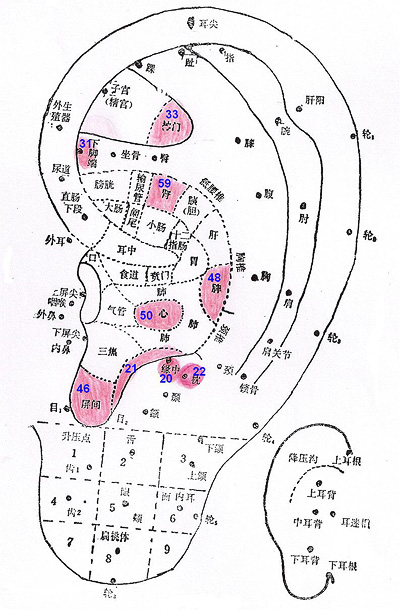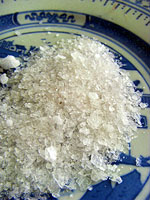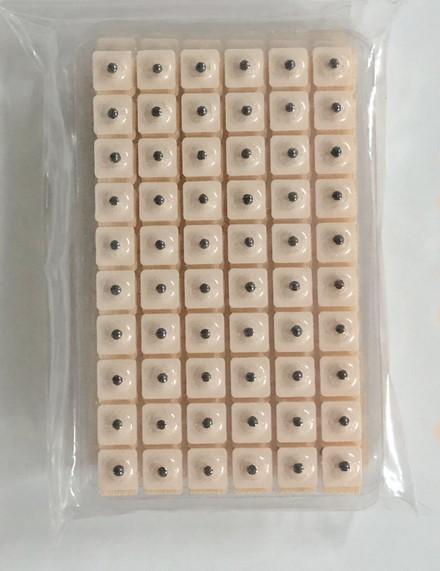Insomnia can be viewed as a disturbance of the brain that is overly stimulated by stress, environment, medication and other health problems. In traditional Chinese medicine (TCM), insomnia belongs to a shen (
spirit) disorder which is attributed to “
yang can’t enter yin, and spirit depart from its place”.
The ears are hearing organs that closely connected with the internal organs. They are the openings of the kidney on the body surface; the heart works together with the kidney to keep their hearing function; the spleen supports them with
nutrient essence. Among the six yang meridians, the small intestine, triple burner, gallbladder and large intestine meridians enter or branch out collaterals into the ears; the stomach meridian runs across the ear front; while the bladder meridian runs across the top of the ear. Moreover, even though the six yin meridians have no direct links with the ears, but they have branches to communicate with the six yang meridians, and thus also connect to the ears indirectly. TCM regards the auricles as important body parts for clinical diagnosis and treatment, stimulating on the auricles can achieve general or local regulating effects.

Auricular therapy has long been used in TCM; physicians have created a variety of applications, such as acupuncture, moxibustion, massage, medicinal patches, suppositories, needle embedding, bloodletting or herbal powdering. Auricular therapy is often used with other modalities for disease management.
For insomnia, the usual method of auricular stimulation is by acupuncture, pressing and bloodletting. Auricular points that help calm the spirit and promote sleep are the heart (50), spleen (48), kidney (59), shen men (33), brain (21), central rim (20), occipital (22) endocrine (46), and sympathetic nerve (31). See the above graphic for references.
Acupuncture stimulation
Select 2~3 auricular points on one side of the ears, clean and sterilize first and then stimulate the points with filiform needling. Insert a needle into the cartilage and then twirl rapidly for 30 seconds, be careful not to penetrate through the ear, retain the needles for 10~20 minutes to enhance stimulation or to facilitate further manipulation. Done every two days or daily, 10~20 times as one course, and rest for one week before the next course.
In case if cannot receive the therapy regularly, it is possible to embed dermal needles on the points. This can keep on the places for 3~5 days; remind the individual to press several times a day in order to enhance the stimulations.
Pressing stimulation
Select 2~3 auricular points on one side of the ears, clean and sterilize first, and then fix magnetic patches on the points. Individuals should press on the patches frequently, especially after meals and before sleep, 5 minutes each time. The pressure should be sufficient to make the areas turn red and feel heat and pain. Change the patches and the side every two days.
For persistent insomnia, physicians may suggest using patches made with herbal seeds like vaccaria seed, radish seed, LiuShen Pill or borneol crystal, paste on both back and front surfaces of the auricular points for stimulation.

|
 |
| Borneol crystal |
Patches with vaccaria seeds |
Bloodletting stimulation
Massage on one side of earlobe to activate the blood circulation, clean and sterilize the region, hold it with one hand and use a cleaned three-edged needle to prick about 2 mm deep, then squeeze the ear lobe gently to release 4~5 drops of blood, afterward press the punctured point with a clean swab to stop bleeding.
Bloodletting can be done twice a week and prick on one side alternatively. Individuals with bleeding problems, anemia, hypotension and pregnant women are not advised for this technique.





